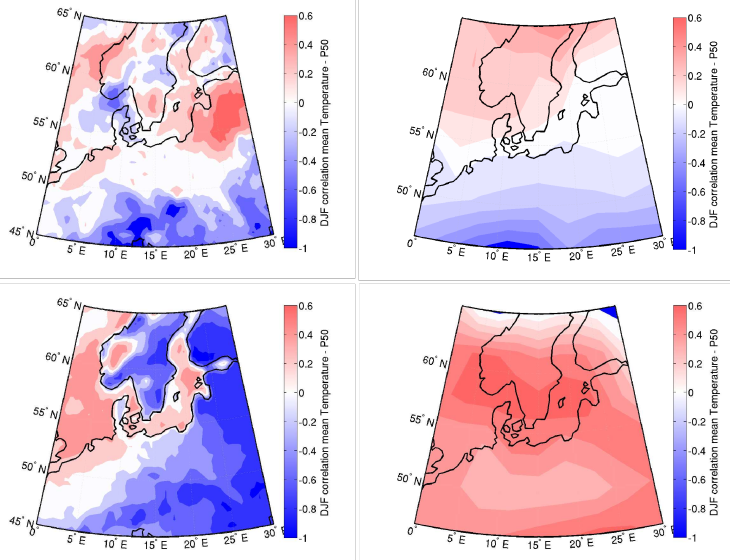New Study: The Relevance of Climate Models for Wind Analysis
Changes in wind velocity over northern Europe during winter months are linked to the dynamics of large-scale climate factors such as near-surface temperature and the North Atlantic Oscillation (NAO). The intensity of the respective correlations, however, depends heavily on the initial and boundary conditions of the climate model used in each instance. Dr. Svenja Bierstedt from the Department of Coastal Impacts has made this discovery. In her study, the meteorologist compared simulations with different global and regional models as well as reanalysis data (based on measured values).
The observed periods in the model calculations range from several hundred years ago up to the present day. Reliable data (by NCEP and coastDat2 in this study ) is available for approximately the last sixty years. The global models used, ECHO-G, ECHAM5 and ECHAM6, are all coupled atmospheric and oceanic models, while the applied regional models are not. The simulations carried out with the global models deliver overwhelmingly similar results. One example is that some of the simulations show positive correlations between the average near-surface temperature and a statistically relevant data selection for the wind velocity. Consequently, the average wind velocity increases with higher near-surface temperatures during the European winter months.

Correlation between the average near-surface temperature Tmean and the median wind velocity ffmed for the winter months of December, January and February. Positive values (red) indicate an increase of Tmean during an increase of ffmed. Left: regional model outputs (above: CCL, below: MM5). Right: global model outputs (above: ECHAM5, below: ECHO-G). The simulation results between the regional and global models are in part very different.
Graphic: HZG/Svenja Bierstedt
The simulations with the regional CCLM and MM5 models, however, provide similar results among the two but differ from those calculated with the global models ECHO-G and ECHAM5. The latter provide relevant input data that is integrated into the higher resolution regional models. It is therefore a surprise that the results between the regional models and the global models are so different, according to Svenja Bierstedt. The simulations from CCLM and MM5, for example, show a tendency toward higher wind velocities during lower temperatures—or simply put: if it becomes colder, it also becomes windier on average.

Comparison between land use changes and modification of the wind velocity between the years 850 and 2005. Black: tree population development, averaged over the entire model area (according to Pongratz et al., 2008). Blue: standard deviation (multiplied by -1) for the thirty-year running mean wind velocity with the global model ECHAM6. Graphic: HZG/Svenja Bierstedt
“One reason for the varying results could be the different forcings,” says Svenja Bierstedt. Examples include land use changes. They are already integrated in the newer versions of the global models used here. Modifications such as tree clearing and new land development produce changes in surface properties, which can locally affect climate parameters such as temperature and wind velocity.
Simulations using reanalysed data provide similar results to the global models. Overall, however, the uncertainties caused by the wide range of results are the focus. Of particular importance is the more in-depth study of the interactions and the relationships between the small and large-scale parameters and influences.
The study included not only scientists at the Helmholtz-Zentrum Geesthacht (HZG), but also researchers from the Physics Institute and the Oeschger Centre for Climate Change Research (OCCR) in Bern. The study recently appeared in the open access journal Climate of the Past.
Further information:
Contact


